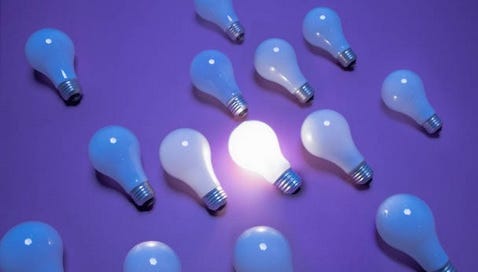💭 Discovery techniques
Testing waters 🧪 to see if your product works before you build it 🔨
Book review #1: Inspired, by Marty Cagan, part 2 📚. You can check part 1 in this post.
Reading time: 3 minutes 🏃♀️
As I mentioned in my previous post, there are many reasons why product launches fail. One of the most critical reasons are weak product teams and lack of discovery phase.
The goal of the discovery phase is to collect evidence that the product has product market fit and business viability before you start producing it for real (which consumes time and money). Most companies use an MVP or a prototype for it.
Below, I mention a few discovery techniques. They go from simple brainstorming sessions to more complex techniques and they are not mutually exclusive.
Discovery techniques
Opportunity Assessment Technique 🙋🏽♂️
A simple approach that forces you to brainstorm by answering four key questions: What business objective is this work intended to address?
(Objective) What business objective is this work intended to address?
(Key results) How will you know if you've succeeded?
(Customer problem) What problem will this solve for our customers?
(Target market) What type of customer are we focused on?
Customer Letter Technique 📨
Another simple approach, and one that is very much inspired by Amazon’s working backwards culture. Consists of writing an imaginary press release of what it would be like once this product launches. How does it improve the life of our customers? What are the real benefits to them? You've all read a press release before—the only difference is that this is entirely imagined. It is describing a future state we want to create.
Story maps 🗺️
This is a framing and planning technique that is just as useful for ideation. They are also used as a design technique when working on prototypes, and they are great for communicating with your team and stakeholders. They also play a very practical role in managing and organizing your work. Further, a story map is helpful throughout product discovery and delivery. For further reading about this technique, check out this book.
Customer Discovery Program Technique for B2B products 🏫
Select prospective 5-6 customers (exclude people who are related to your business or experts) that truly feel the pain you are trying to solve and are willing to work with your prototype.
If you are having a hard time finding those customers, then it is possible that the problem you are chasing is not as big as you think
Customer Discovery Program Technique for B2C products 👜
Engage with 10-50 customers to the point that they love the product you are creating, ideally people that have never been exposed to it.
Apply the Sean Ellis survey: asking them how they'd feel if they could no longer use this product. (The choices are “very disappointed,” “somewhat disappointed,” “don't care,” and “no longer relevant because I no longer use.”). The general rule of thumb is that if more than 40 percent of the users would be “very disappointed,” then there's a good chance you're at product/market fit
Customer Interviews (for B2B and B2C) 👭🏻
The objective of customers interviews is to understand:
Are your customers who you think they are?
Do they really have the problems you think they have?
How does the customer solve this problem today?
What would be required for them to switch to your product?
Concierge Test Technique (for B2B) 🛎️
A concierge test requires going out to the actual users and customers and asking them to show you how they work so that you can learn how to do their job, and so that you can work on providing them a much better solution.




